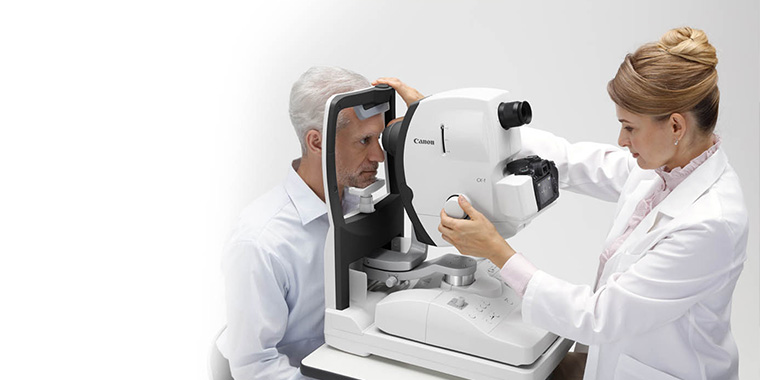Neurologist in Andalusia: Leading Specialists and Clinics Detailed
Neurologist in Andalusia: Leading Specialists and Clinics Detailed
Blog Article
The Advantages And Disadvantages of Various Refractive Surgical Procedures for Improved Eyecare
LASIK Surgical Treatment
LASIK surgical procedure is a typically done refractive procedure that intends to remedy vision concerns such as farsightedness, astigmatism, and nearsightedness. Throughout the procedure, a slim flap is created on the cornea, and a laser is utilized to reshape the underlying tissue, dealing with the refractive mistake.
One of the primary advantages of LASIK surgical procedure is the fast improvement in vision experienced by several patients. It is crucial for people taking into consideration LASIK surgery to undertake a detailed examination by an eye care specialist to determine if they are appropriate candidates for the treatment.
PRK Procedure
The PRK treatment, also understood as Photorefractive Keratectomy, is a type of refractive surgical treatment that aims to correct vision issues comparable to LASIK surgery. Unlike LASIK, which entails producing a flap in the cornea, PRK functions on the surface area layer of the cornea.
One of the advantages of PRK over LASIK is that it eliminates the risk of flap-related complications considering that no flap is developed during the surgery. This can be helpful for individuals with thin corneas or those associated with get in touch with sporting activities where eye injury is an opportunity. Nevertheless, the recovery time for PRK is usually longer compared to LASIK, as the outer layer of the cornea needs time to regenerate after the treatment. Regardless of the longer recuperation duration, PRK can be a suitable option for people looking for vision improvement surgical procedure.
SMILE Surgical Procedure
A cutting-edge refractive surgical procedure method gaining appeal in the field of ophthalmology is SMILE Surgical procedure. Little Laceration Lenticule Extraction (SMILE) is a minimally invasive treatment that deals with vision by improving the cornea utilizing a femtosecond laser. Unlike typical LASIK surgical treatment, SMILE Surgical procedure includes creating a little laceration in the cornea to draw out a lenticule, which causes much less interruption to the corneal framework and possibly faster healing times.
One of the main benefits of SMILE Surgical procedure is its capability to treat nearsightedness (nearsightedness) and astigmatism with high accuracy, bring about exceptional visual results for patients. The minimally intrusive nature of the procedure additionally minimizes the danger of problems such as completely dry eye disorder, making it a positive choice for individuals looking for refractive surgical treatment.

LASEK Method
Having discovered the benefits and factors to consider of SMILE Surgical procedure, one more significant refractive surgical treatment method worth taking a look at is the LASEK Method. LASEK, which represents Laser-Assisted Subepithelial Keratectomy, is a form of laser eye surgical treatment that intends to remedy refractive mistakes such as nearsightedness (nearsightedness), hyperopia (farsightedness), and astigmatism.
Unlike LASIK, LASEK does not entail creating a corneal flap. Rather, during a LASEK procedure, the specialist makes use of a watered down alcohol remedy to loosen the slim outer layer of the cornea, referred to as the epithelium. This layer is click here to find out more then carefully moved aside to enable the laser to improve the underlying corneal tissue. As soon as the cornea has been reshaped to the wanted degree, the epithelial layer is repositioned.
Among the key advantages of LASEK is that it can be appropriate for people with thin corneas who might not be good candidates for LASIK. In addition, LASEK typically causes marginal post-operative discomfort and a quicker healing time compared to PRK. Nevertheless, the aesthetic recovery process with LASEK may be slightly longer than with LASIK.
Implantable Call Lenses
Implantable Get in touch with Lenses offer a lasting vision improvement remedy for individuals looking for an alternative to typical call lenses or glasses. These lenses, likewise referred to as phakic intraocular lenses, are operatively put into the eye to fix refractive mistakes such as nearsightedness (nearsightedness), hyperopia (farsightedness), and astigmatism. neurologist Andalusia. Unlike typical contact lenses that rest on the surface area of the eye, implantable call lenses work within the eye itself, supplying clear vision without the need for day-to-day upkeep or removal
Among the essential advantages of implantable get in touch with lenses is their durability. Once put, they can continue to be in the eye forever, offering secure and consistent vision correction. In addition, these lenses can be an excellent option for people who are bad prospects for laser eye surgical treatment or that favor a relatively easy to fix vision correction treatment.
Nevertheless, implantable call lenses do lug some dangers, consisting of the possibility for cataracts or boosted eye stress. It is critical for people considering this choice to seek advice from an eye treatment professional to figure out if implantable contact lenses are the best selection for their specific needs and eye wellness.
Conclusion
In final thought, each kind of refractive surgical treatment has its very own advantages and negative aspects. LASIK surgery is prominent for its fast healing time, while PRK treatment might be suitable for clients with slim corneas.

Overall, SMILE Surgical procedure offers a promising choice for individuals looking to improve their vision via refractive surgery.
Report this page